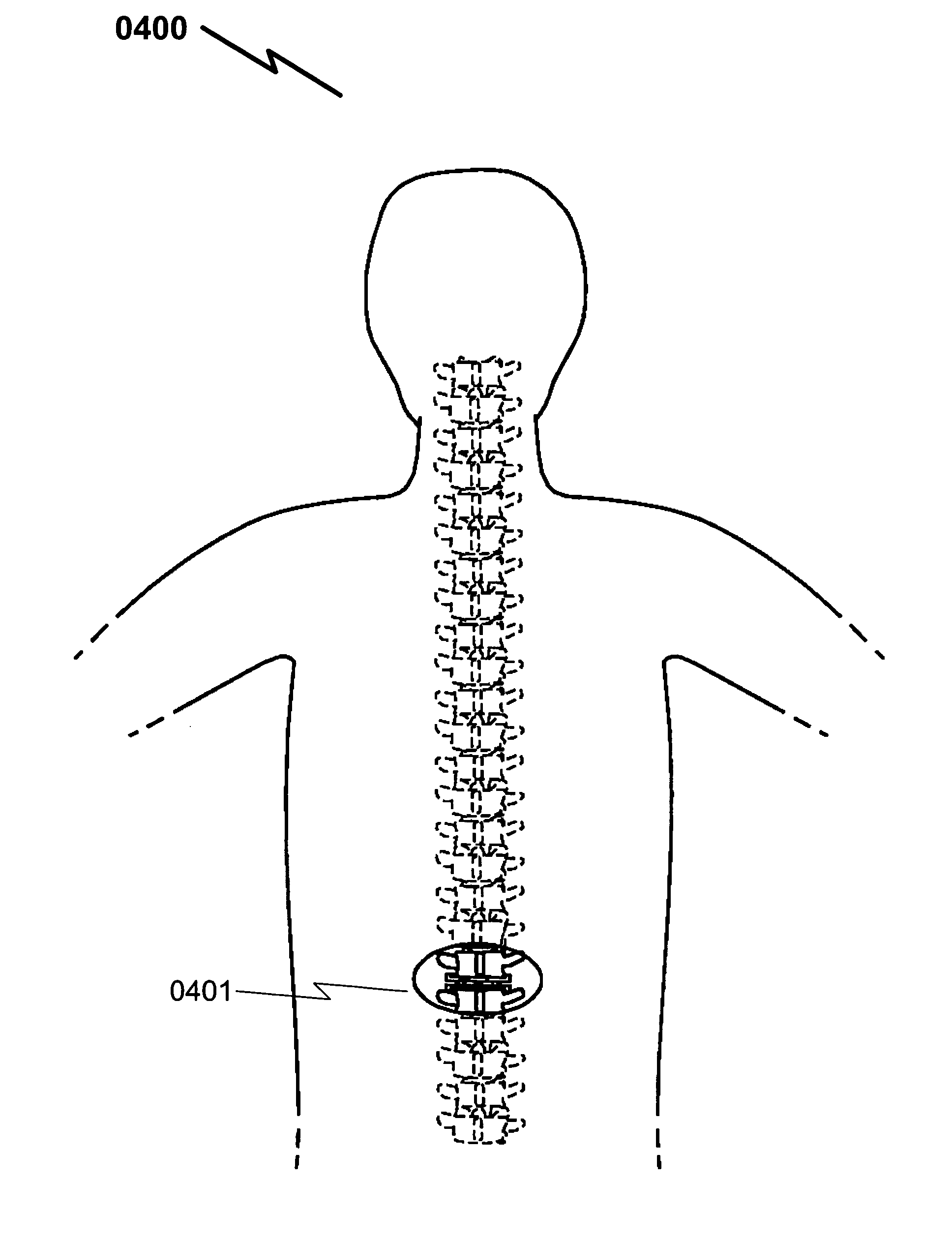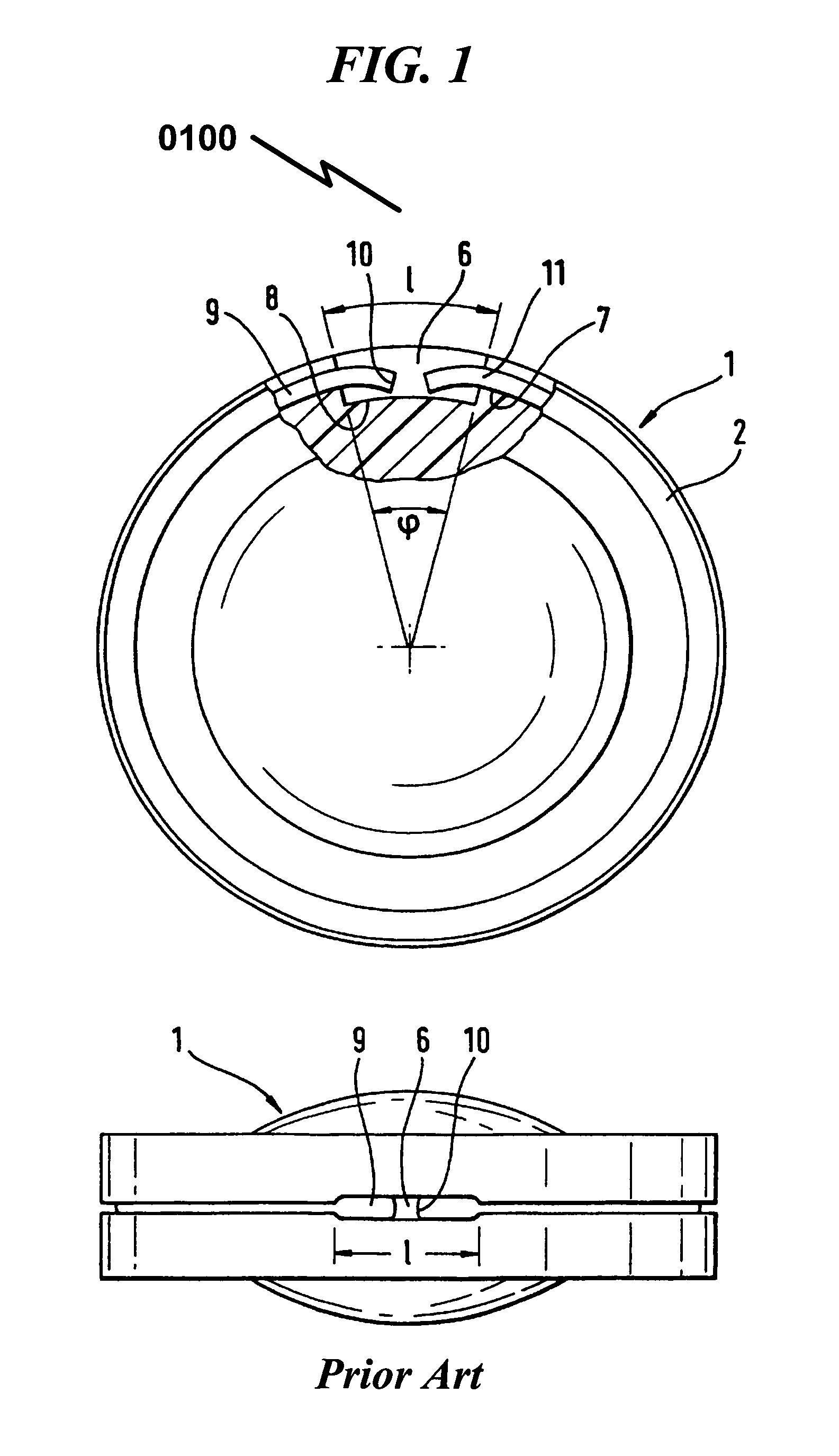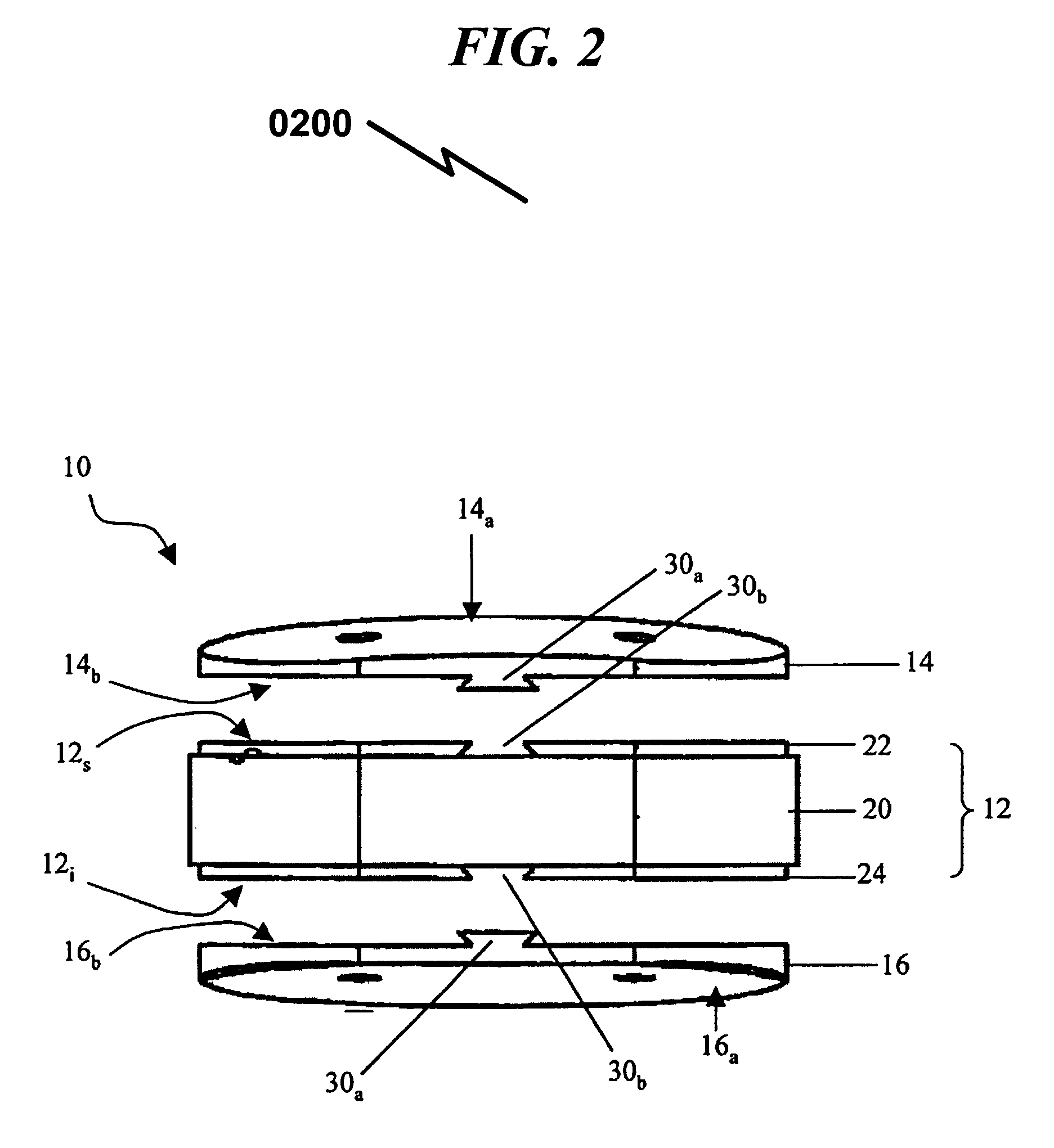Artificial spinal disc replacement system and method
a technology of artificial spinal discs and discs, applied in the field of artificial spinal disc replacements, can solve the problems of limiting range-of-motion (rom), affecting the function of patients, and significant pain and suffering of patients so affected, so as to preserve spinal range-of-motion (rom) and flexibility, eliminate nerve root and/or spinal cord compression, and preserve spinal rom and flexibility
- Summary
- Abstract
- Description
- Claims
- Application Information
AI Technical Summary
Benefits of technology
Problems solved by technology
Method used
Image
Examples
embodiment (
Generalized Method Embodiment (4000)
[0179]The present invention may incorporate a method of using the system as described in an application wherein a spinal disc is replaced within a patient. This method (4000) may be generally described as follows:
[0180]A method of artificial spinal disc replacement within a patient's spinal column, said method comprising:[0181](1) Laparoscopically creating an incision into a portion of said patient's back at the point of spinal disc replacement on said spinal column (4001);[0182](2) Inserting an upper bracket through said incision, said upper bracket further comprising springs, spring fasteners, and upper vertebral contact surface (4002);[0183](3) Inserting a lower bracket through said incision, said lower bracket further comprising lower vertebral contact surface and spring guide track (4003);[0184](4) Mating said upper bracket springs into said lower bracket spring guide track (4004);[0185](5) Fixing said upper bracket upper vertebral contact su...
PUM
 Login to View More
Login to View More Abstract
Description
Claims
Application Information
 Login to View More
Login to View More - R&D
- Intellectual Property
- Life Sciences
- Materials
- Tech Scout
- Unparalleled Data Quality
- Higher Quality Content
- 60% Fewer Hallucinations
Browse by: Latest US Patents, China's latest patents, Technical Efficacy Thesaurus, Application Domain, Technology Topic, Popular Technical Reports.
© 2025 PatSnap. All rights reserved.Legal|Privacy policy|Modern Slavery Act Transparency Statement|Sitemap|About US| Contact US: help@patsnap.com



